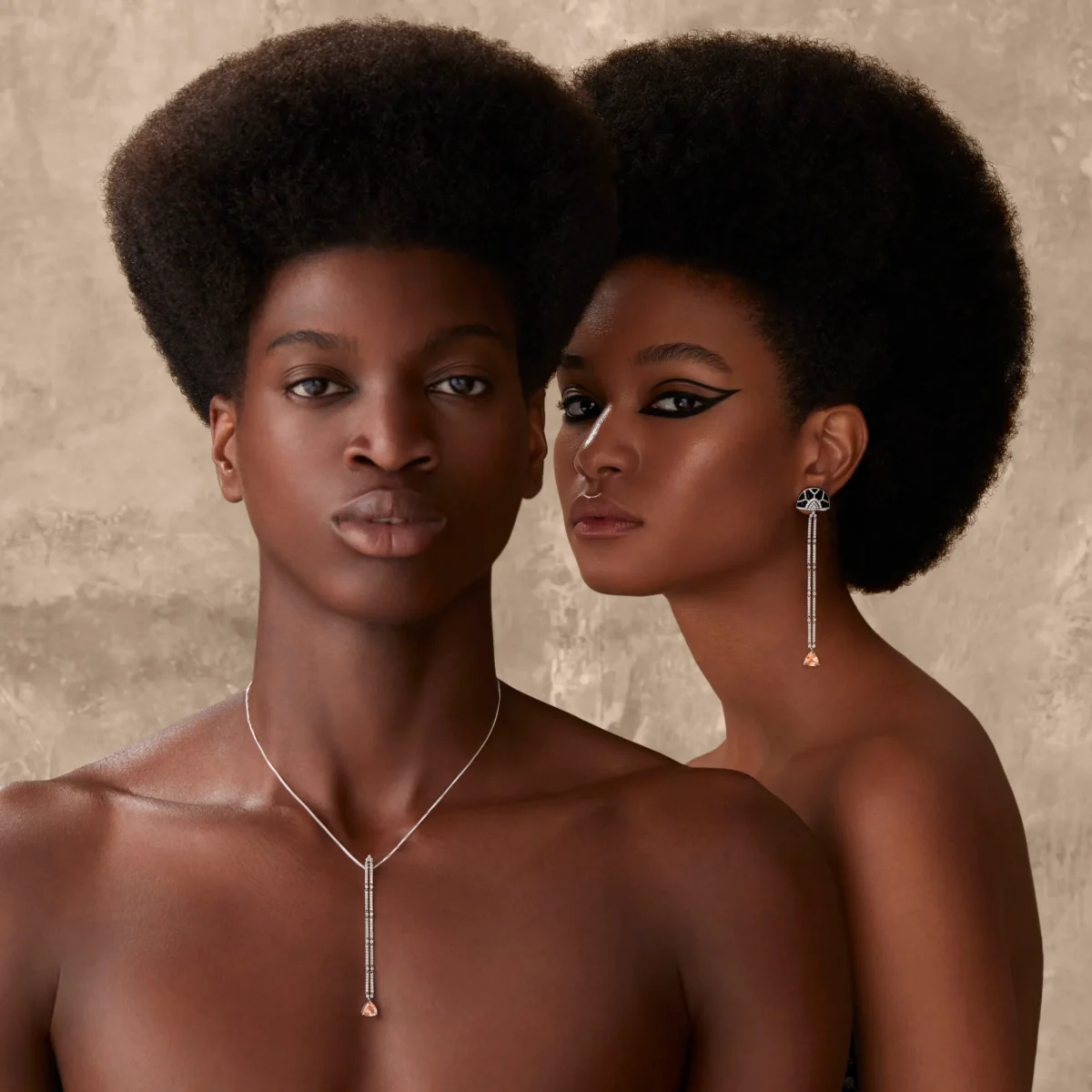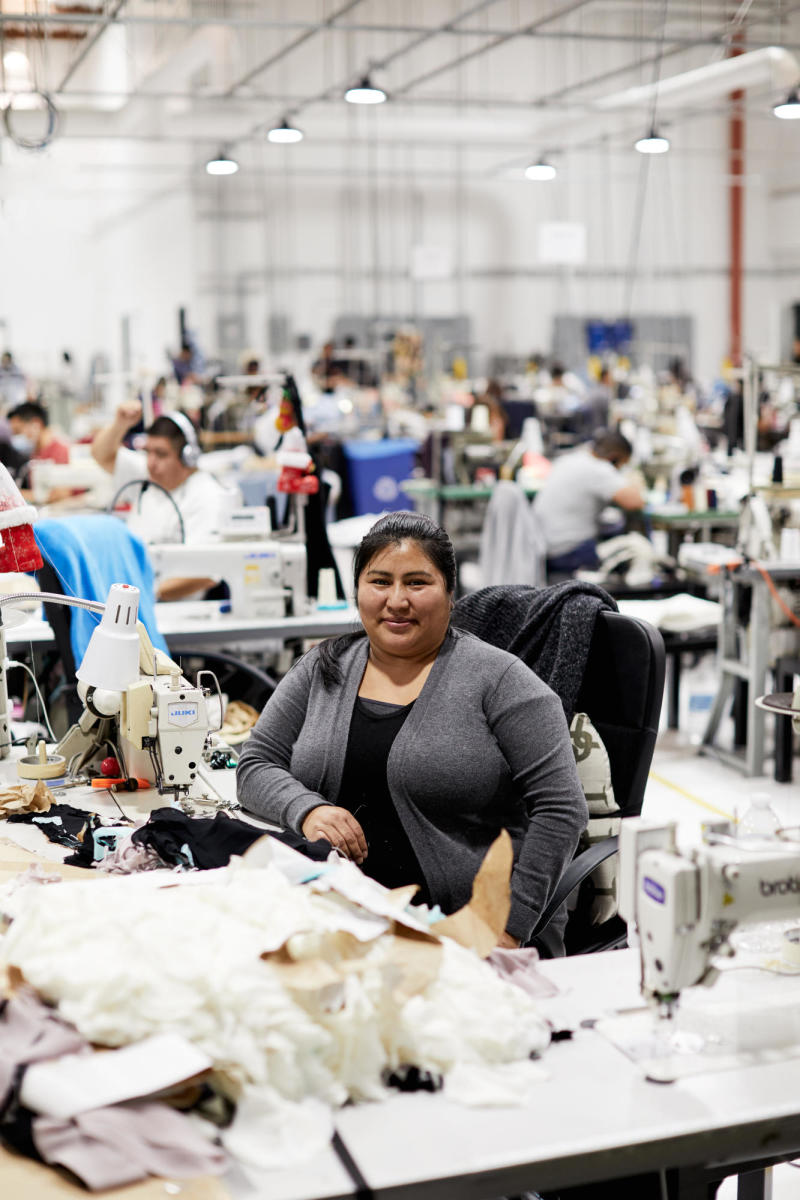| All products featured on The Wellness Feed are independently selected by our editors for its environmental and ethical impact. However, when you buy something through our retail links, we may earn an affiliate commission. |
Fashion’s latest buzzwords can leave you scrambling for a dictionary (or Wikipedia) to figure out exactly what they mean. And, with terms like ‘sustainable‘, ‘fair trade’ and ‘environmentally friendly’ thrown around as often as a fast fashion brand’s latest collection drop, it can be hard to figure out the difference. But, if you want to shop for environmentally friendly clothes and not fall prey to false advertising, it’s important to understand these buzzwords so that you can make conscious buying decisions.
If you want to get technical, the dictionary defines ‘environmentally friendly’ as ‘not harmful to the environment’. Sometimes you’ll see the terms ‘eco-friendly’ , ‘eco’ or ‘green’ used in place too. Whatever term is used, the point is clear- products and policies making these claims are focused on reducing their harmful impact on ecosystems and the environment. It’s also important to note that when it comes to environmentally friendly clothes, these terms should be backed up with actionable methods and initiatives taken to minimize this impact. At it’s worst it’s an ambiguous phrase that can give rise to greenwashing. At it’s best environmentally friendly clothes focus on key areas to minimize their harmful impact on the environment. Several of these areas include how raw materials are sourced, water consumption and pollution, packaging materials, energy use and air pollution.

Sourcing Raw Materials
In order to minimize their harmful impact on the environment designers must look at the fabrics and how these materials are manufactured and sourced. The best fabrics for environmentally friendly clothes are part of circular design; a process where designers consider how a product will be disposed of. Fabrics that are biodegradable or can be recycled again and again are two environmentally friendly options.
Buzzword Breakdown: What Makes Organic Cotton So Good For The Earth?
An example of biodegradable fabrics would be organic cotton. It’s estimated that conventional cotton farming accounts for 16% of the world’s insecticide use. When compared with its conventional counterpart, organic cotton causes less environmental harm because it is grown without the use of harsh pesticides or fertilizers that pollute surrounding soil and water resources. Organic cotton also uses 88% less water and 62% less energy use since it doesn’t require excess energy from fertilizer production.
Recycled and recyclable materials also offer environmental benefits. Over the last few years polyester made from recycled plastic bottles have become a popular material for environmentally friendly clothes brands that specialize in athleisure and swimwear. Instead of sourcing raw materials that require fossil fuels, recycled fabrics use post-consumer waste materials to create something new that can be recycled again and again. This creates a closed loop system where waste is recycled and new waste isn’t added to our landfills.

Water Use & Pollution
Fashion needs to reduce its water footprint. Every year those glittering piles of new clothes cost our planet 93 billion cubic meters of water. That’s enough to fill up 37 million Olympic sized swimming pools. When 2 billion people worldwide don’t have access to clean and safe drinking water, statistics like this become a not so pretty part of the fashion industry. Organizations like the UN Alliance for Sustainable Fashion have taken notice and are coordinating efforts with designers to combat issues around water waste and pollution.
Tomorrow’s Best Jeans Brands Will Be Toxic-Free & Less Wasteful
Environmentally friendly clothes can save water use and minimize pollution from toxins by making a switch to organic cotton. According to a report from the Textile Exchange in 2017, an organic cotton t-shirt uses 91% less water than a conventional cotton shirt which guzzles 2,270 liters of water. Denim brands like Levi’s are tackling these issues with initiatives like Water<Less Jeans that use 28%-96% less water. The brand has also pledged to eliminate hazardous chemicals used in their production process which contaminate water sources in areas where denim is dyed.
Energy Use
Fashion is not only labor intensive, it’s also CO2 intensive because of the various machinery and equipment used throughout the production process. From the machines used to harvest cotton crops to those used for spinning, weaving and processing fabrics, each stage requires fuel and emits CO2. All of this happens before items are even shipped to customers where transportation can contribute to more greenhouse gas emissions. All in all, this supply chain is estimated to produces 2.1 billion metric tons of greenhouse gas emissions yearly.
What We Learned From The Sustainable Journeys Of These Podcast Hosts
Environmentally friendly clothes take these facts into account and find solutions to offset emissions. That could mean that recycled materials are used to reduce energy consumption when compared with virgin materials. Some brands invest in collaborating with manufacturers that use renewable energy sources like solar or wind power. These efforts can minimize the dependence on fossil fuels and offset some of the negative environmental effects like CO2 emissions.

Packaging Materials
Packaging plays a big role in our world’s environmental crisis. Much like single-use plastic bags, single-use packaging is part of the reason that the fashion industry accounts for 5% to 10% of pollution globally. Each stage of the production process requires items to be transported and in the the past that has been with plastic bags. Once those items reach the customer, they are further packaged in tissue paper and more plastic bags. All of this amounts to single-use plastic that pollutes our environment.
What The Future Of Sustainable Packaging For Beauty Brands Looks Like
There are alternatives to plastic. Some brands have made bio-plastic from plants like sugarcane instead of fossil fuels. Other options include using recycled or recyclable paper packaging that is biodegradable. Some brands even look within their own waste output and use fabric scraps as part of their packaging solution.
So What Makes A Brand Environmentally Friendly?
When brands work towards minimizing their negative impact, that makes them environmentally friendly, sustainable, eco and green. There are multiple areas and ways that a brand can do this, but when they do the end result is the same. And, you’re interested in shopping a few of theses brands yourself and learning about their environmental impact check out this roundup of 60 sustainable brands and why they’re sustainable.





